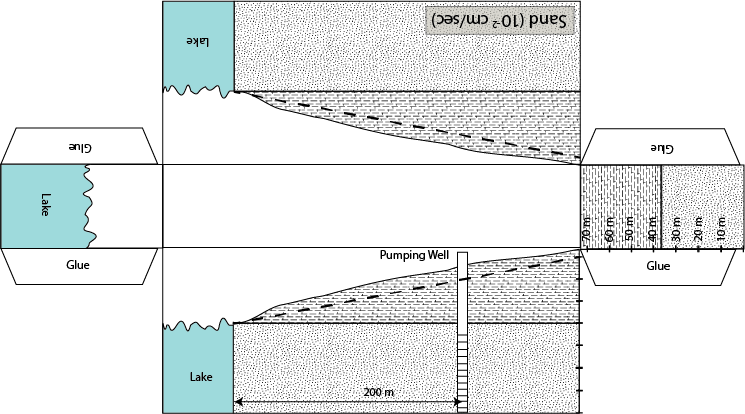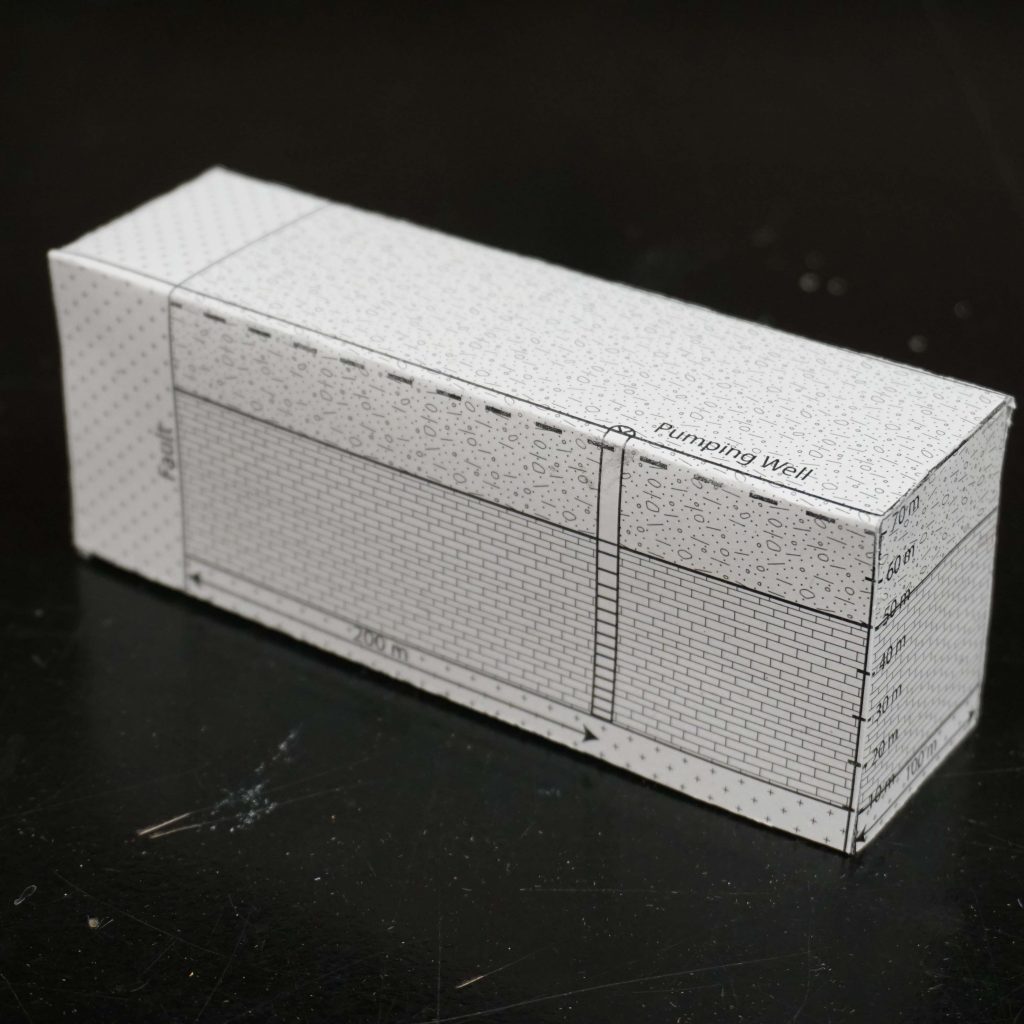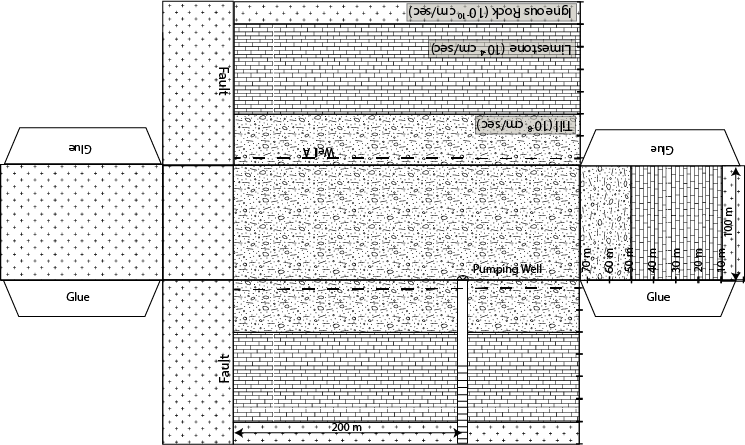
Objectives: Quantify the impact of groundwater pumping on
drawdown near a wetland.
1. There are scenarios where water managers must balance the
need for water supply against those of ecosystem services. An example is the problem shown below where you
are asked to install a pumping well to provide water for a community but at the
same time there is a legal framework that prevents you from lowering the water
table in a nearby wetland.
Using the foldable aquifer models given below answer the
following questions.
A. Without changing the level of the water table at the
wetland determine the maximum pumping rate at the water supply well.
B. If the lake were to be removed from this problem would your
maximum pumping rate increase or decrease?
By how much?


This work is licensed under a Creative Commons Attribution-NonCommercial 4.0 International License.







